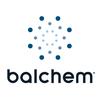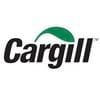The Earth's Fever: Understanding and Addressing Global Warming
Published: April 1, 2025
Source : A Ashraf Ali
-A.Ashraf
Our planet is running a fever. This isn't a metaphor; it's a stark reality. Global warming, or climate change, refers to the long-term increase in Earth's average temperature due to the enhanced greenhouse effect caused by human activities. Essentially, we're trapping more of the sun's heat within our atmosphere.
The Impact : A Cascade of Consequences
The repercussions of this warming trend are far-reaching and devastating
Rising Sea Levels: Melting glaciers and thermal expansion of water are causing oceans to rise, threatening coastal communities and ecosystems.
Extreme Weather Events: Increased frequency and intensity of hurricanes, droughts, floods, and wildfires disrupt lives and economies.
Disrupted Ecosystems: Changes in temperature and precipitation patterns are altering habitats, leading to species extinction and biodiversity loss.
Agricultural Disruptions: Shifts in weather patterns affect crop yields, threatening food security.
Ocean Acidification: Increased carbon dioxide absorption by oceans is making them more acidic, harming marine life, particularly coral reefs.
Human Health Impacts: Heatwaves, air pollution, and the spread of infectious diseases are becoming more prevalent.
The Industrial Culprits : A Breakdown
Several industries contribute significantly to global warming
Fossil Fuel Industry: The burning of coal, oil, and natural gas for energy production is the largest source of greenhouse gas emissions, particularly carbon dioxide (CO2).
Transportation: Vehicles, airplanes, and ships release substantial amounts of CO2 and other pollutants.
Manufacturing: Industrial processes, including cement and steel production, generate significant emissions.
Agriculture and Land Use: Deforestation, livestock farming, and the use of fertilizers contribute to greenhouse gas emissions, including methane (CH4) and nitrous oxide (N2O).
Poultry and Dairy: The Livestock Contribution
Yes, poultry and dairy farming do contribute to global warming. Here's how
Methane Emissions: Livestock, particularly cattle, release methane, a potent greenhouse gas, through their digestive processes (enteric fermentation).
Nitrous Oxide Emissions: Manure and fertilizer use release nitrous oxide.
Deforestation: Expansion of pastureland and feed production often leads to deforestation, releasing stored carbon.
Feed Production: Growing crops for animal feed requires energy and resources, contributing to emissions.
The Backfire: A Looming Threat
The very industries that contribute to global warming are also vulnerable to its effects
Heat Stress: Extreme heat can reduce livestock productivity and increase mortality.
Feed Availability: Droughts and floods can disrupt crop yields, impacting feed availability and prices.
Disease Outbreaks: Climate change can create favorable conditions for disease vectors, increasing the risk of outbreaks.
Water Scarcity: Water is essential for livestock and poultry farming, and climate change is exacerbating water scarcity in many regions.
A Global Call to Action: Mitigation and Adaptation
Preventing catastrophic climate change requires a concerted global effort
Transition to Renewable Energy: Shifting away from fossil fuels to solar, wind, and other renewable energy sources is crucial.
Energy Efficiency: Reducing energy consumption through improved technologies and practices.
Sustainable Transportation: Promoting electric vehicles, public transportation, and alternative fuels.
Sustainable Agriculture: Adopting practices that reduce emissions, such as precision agriculture, improved manure management, and reduced deforestation.
Carbon Capture and Storage: Developing technologies to capture and store carbon dioxide emissions.
Reforestation and Afforestation: Planting trees to absorb carbon dioxide.
Responsibilities in the Poultry and Dairy Sectors
Even as vital food security industries, poultry and dairy must embrace sustainable practices
Improved Manure Management: Implementing technologies to reduce methane and nitrous oxide emissions from manure.
Feed Optimization: Improving feed efficiency to reduce the amount of feed required per unit of product.
Precision Livestock Farming: Utilizing technology to optimize animal health and productivity, reducing resource use.
Renewable Energy Adoption: Utilizing solar and wind energy in farm operations.
Sustainable Sourcing: Sourcing feed from sustainable suppliers.
Stakeholder Responsibilities
Broiler Integration Companies and Large Egg Layer Farmers:
Should invest in and implement sustainable practices, improve manure management, and optimize feed conversion ratios. They should also explore renewable energy sources for farm operations.
Milk Procurement Dairy Companies: Should encourage and support sustainable practices among dairy farmers, invest in methane reduction technologies, and promote sustainable feed sourcing. They should also focus on efficient transportation and processing.
Poultry and Cattle Feed Manufacturing Companies:
Should focus on sustainable sourcing of ingredients, minimize waste, and explore alternative feed ingredients that reduce environmental impact.
The challenge is immense, but not insurmountable. By embracing innovation, collaboration, and a commitment to sustainability, we can mitigate the impacts of global warming and build a more resilient and sustainable future for all.
Author: A.Ashraf Ali
saaraventures@gmail.com
Related topics:
Mentioned in this news release:
Recommend
Comment
Share

Would you like to discuss another topic? Create a new post to engage with experts in the community.













